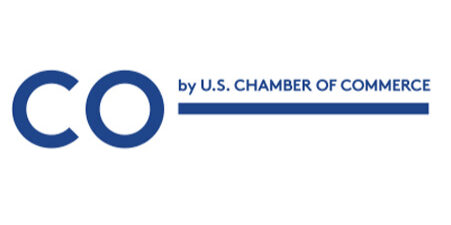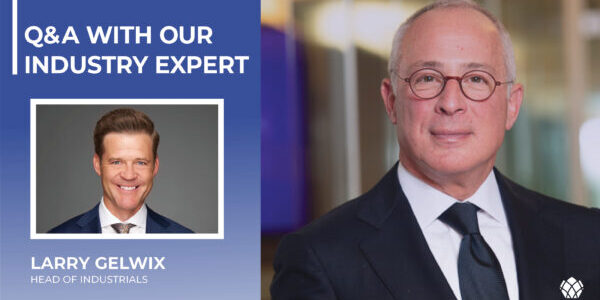Industry Q&A – Marc Cooper with Larry Gelwix and Kent Fisher
Industry Q&A – Marc Cooper with Larry Gelwix and Kent Fisher
by CEO Marc S. Cooper
The M&A outlook for the commercial aviation, defense and space industries is evolving as the pandemic recedes from view. To unpack this more, I sat down with Larry Gelwix, a Partner and Head of the Industrials Practice, and Senior Advisor Kent Fisher, a former senior executive at The Boeing Co. who ran the aerospace company’s M&A group.
You both have worked on some marquee transactions in your careers. What are you focused on now?
LARRY: My practice revolves around two principal sectors: One is aerospace and defense, including the manufacturing supply chains, the related aftermarket service providers, and the aircraft operators themselves. The other is what we call mission-critical industrials. These companies tend to be manufacturers of products for critical applications. Examples include companies that cater to applications such as motion control, capital equipment, automation, and industrial technology and relevant software.
For instance, in 2019, when Kent was running the corporate development department at Boeing, we worked together on the sale of a Boeing software business called Inventory Locator Service (ILS), the industry’s largest electronic marketplace for aftermarket aircraft parts.
KENT: My area of expertise is all things aerospace, in particular commercial aerospace. While running Boeing’s M&A group, we completed or announced about 17 transactions, including, for example, the acquisition of KLX Inc. for $4.25 billion. We also negotiated the joint venture with Brazil’s Embraer SA before later unwinding that agreement as the transaction ultimately wasn’t consummated. In addition to leading the M&A team at Boeing, over the course of my 25 years there I also had roles in commercial supply chain management and I was the CFO of Boeing Commercial Airplanes prior to retiring from the company in 2021.
The M&A environment has been challenging in aerospace. What are the dynamics here?
LARRY: It’s important when we talk about aerospace that we separate commercial aerospace manufacturing from defense industry manufacturing from the aftermarket services, and increasingly space as its own segment with its own M&A drivers. While many of the relevant companies have exposure to multiple sub-sectors, the propellants of transaction activity are often very different.
Beginning with the commercial aerospace manufacturing business, at a high level, the reduction in M&A activity in recent years has largely been attributable to a decrease in the manufacturing of new aircraft, particularly in the Boeing supply chain, overlayed with the pandemic-induced labor and supply chain challenges that have impacted many industries, and a lack of new airplane programs that often incentivizes suppliers to engage in M&A.
On a more positive note, the recent commercial aerospace manufacturing downturn we’ve just lived through is the first in my career where there has been no destruction to demand for aircraft. There has been no long-term damage to the order books, and there’s still huge appetite for new aircraft.
KENT: Larry is 100% correct, this is a very unusual cycle in that the airlines on average over the last three years have been significantly undersupplied. Even if we had an interest-rate driven recession, I think airline demand for new airplanes would stay strong.
Also, because of the uncertainty of the OEMs’ production schedules, and the resultant impact on recent earnings, the bid-ask spreads between buyers and sellers in the manufacturing supply base have widened. There’s a bigger gap than usual, and that’s one of the reasons the M&A activity has been diminished.
So where are the transactional opportunities?
LARRY: Over the course of the last few years, including during the pandemic period, government services has been a bright spot for transaction activity. Also, the aviation aftermarket has seen relatively resilient transaction activity. This category would include providers of outsourced maintenance services, manufacturers of aftermarket parts, distributors of those parts, and other providers of services for aircraft.
This relative health of the aftermarket is principally driven from older aircraft operating in the system as new models have been slow to enter service and a significant rebound in demand for air travel.
What are the dynamics in the defense sector?
KENT: Defense has had its own gyrations with the US withdrawal from Afghanistan and Russian invasion of Ukraine. That’s kind of thrown everyone’s business plans into uncertainty a bit. People are concerned about too much consolidation in the US defense industry and there isn’t a lot of appetite for additional significant mergers. However, that may lead to some divestitures as will periodic business portfolio reviews among the industry’s largest companies.
How would you size up the opportunities in the emerging space economy?
LARRY: It’s a super interesting area, and the space economy is real. You only need to look at the public fascination with the recent SpaceX launch to get a glimpse into the future of that.
Among the defense primes and the more traditional space industry participants, while there is keen interest, we don’t expect significant large-scale M&A. That said, Advent recently completed its acquisition of Maxar Technologies, and Boeing and Lockheed Martin are widely reported to be exploring a sale of their space launch joint venture United Launch Alliance (ULA).
In addition, there is an entire ecosystem of emerging space companies. During the SPAC craze a couple years ago, there were roughly a dozen space companies that went public via de-SPAC transactions. Many of them did not generate earnings and some of them are more closely aligned with venture than a seasoned corporate company profile. We expect there will be some M&A activity among these companies and their privately-held peers as they look to consolidate in an effort to improve their earnings profiles and increase their contract positions. In some cases, fresh capital may be required to facilitate activity and we are watching closely investor risk appetite for space in the current, more cautious economic environment.
Looking ahead, what’s going to surprise industry observers?
KENT: Regarding commercial aerospace, I think that in the fourth quarter or sometime in 2024, as the OEMs start to prove that they have the kinks worked out of the supply chains, we will begin to see the valuation gap between buyers and sellers close.
In many respects, there’s pent up demand for transactions in the industry, both among strategics and private equity investors. As soon as conditions allow it, we expect there will be a fair number of them.
LARRY: To amplify the point, we have clients in the commercial supply chain that have identified the deals they want to pursue. But at the moment, while still working through the supply chain recovery, many companies are understandably not yet prepared to go to their shareholders, or to their customers, or to their other stakeholders and tell them that now is the moment for management to focus on the strategic, integration, and other important and time consuming issues involved in a large transaction, while they are still working very hard to hit new production rates and work through the supply chain and labor issues we discussed earlier. As that normalizes, and it’s getting closer every day, so will a return to a more regular pace of M&A activity in the sector.
We are very bullish on the long-term outlook for all things commercial aerospace, defense, government services, and all of the related aftermarket services. These are industries that have faced unprecedented challenges over the course of the last several years and are proving more resilient for it. As the industry continues to evolve, and many of the issues we have discussed today are worked through, we expect a healthy industry and an active M&A market. And we look forward to supporting our clients in successfully pursuing their objectives.





